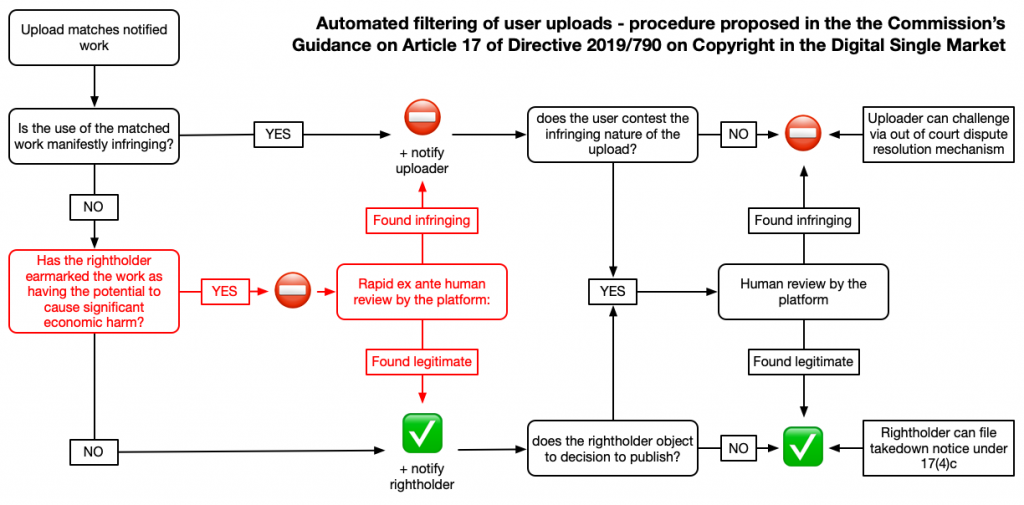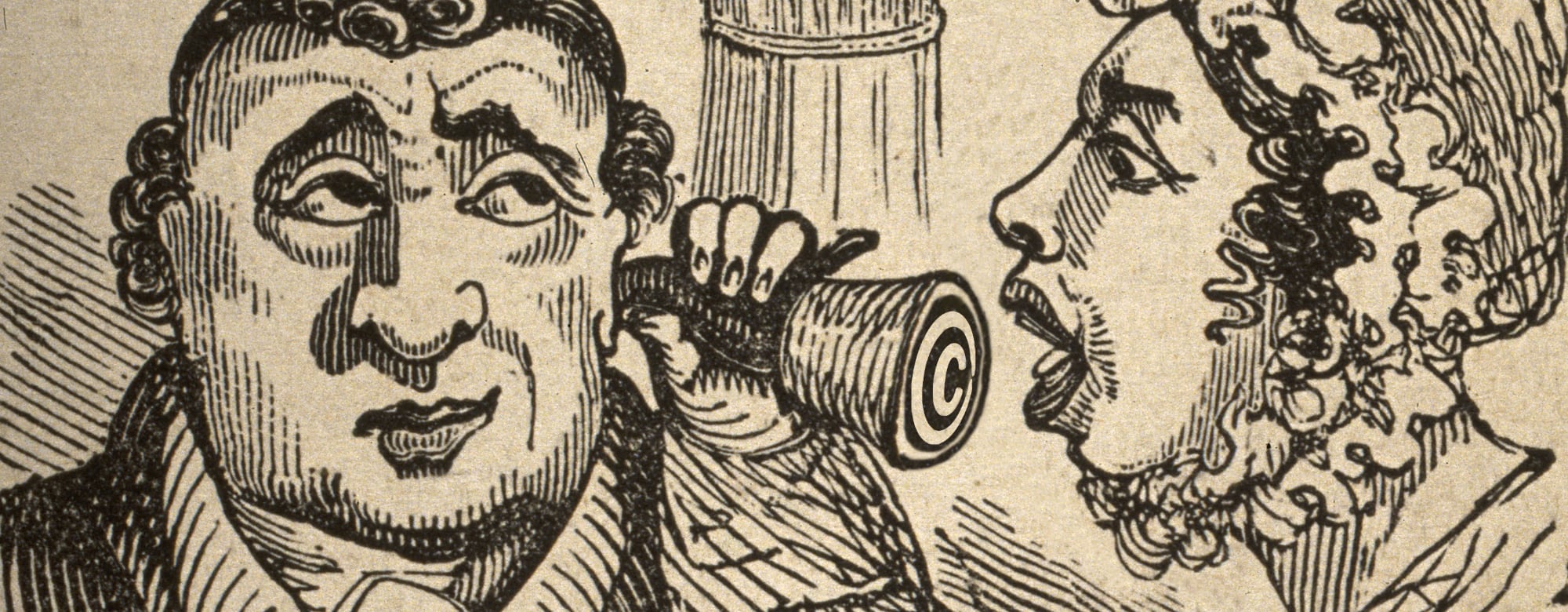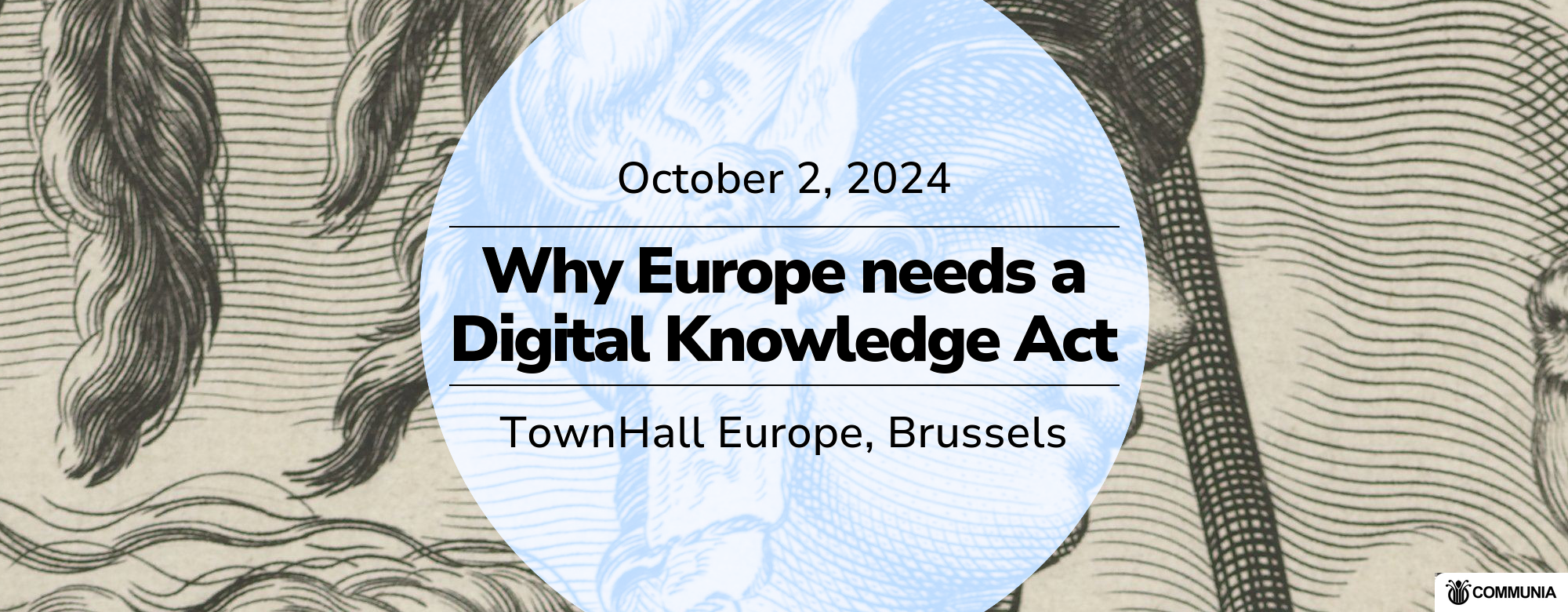Today, on the last day before the implementation deadline for the Copyright in the Digital Single Market Directive, the European Commission has finally published its long overdue implementation guidance for Article 17 of the Directive. The guidance, which marks the end of a stakeholder process that started in October 2019, is supposed to provide Member States implementing the Directive with guidance on how to reconcile the contradicting objectives contained in Article 17 of the Directive. It comes at a time where only a handful of Member States have implemented the Directive into their national law.
In the final version of the guidance published today, the Commission will require Member States to include ex-ante safeguards for user rights in their national implementation legislation. In doing so, it provides support to the implementation approach taken by Germany (and discussed in Austria and Finland), while making it clear that Member States who have limited themselves to merely re-stating the provisions of the Directive (such as France, The Netherlands and Hungary) will need to include such additional safeguards (more on this below).
Unfortunately, and confirming the suspicions that we had expressed in our recent open letter, the final version of the guidance walks back the strong commitment to protect users’ fundamental rights that the Commission had shown earlier in the process. As a result of relentless pressure from the entertainment industry, the final version of the guidance contains an “earmarking” mechanism that is designed to allow rightholders to override safeguards against automated blocking of user uploads that are not manifestly infringing, by claiming that a use of their works “could cause significant economic harm”. This provision is ripe for abuse by rightholders and undermines the relatively strong principles for safeguarding users’ fundamental rights, which the guidelines require Member States to include in their national implementations (see our detailed description of how the “earmarking” provision undermines the principles of the guidance here).
The “earmarking” mechanism was added to the guidance in the last three months, in closed-door deliberations of the Commission and in reaction to massive pressure from rightholders. This back-room dealing of the Commission in the last months stands in stark contrast to the transparent and balanced way in which the Commission had handled the initial stages of the stakeholder process. After a series of public stakeholder dialogue meetings, the Commission had released a remarkably balanced consultation draft of the guidance in July of last year. The Commission then used the principles outlined in the draft to defend the legality of Article 17 before the CJEU, only to agree on a final version that substantially undermines these principles, behind closed doors and without further consultation of the stakeholders involved in the process.
This conduct abuses the stakeholder process that the Commission was legally required to hold as part of the hard fought-political compromise embodied in Article 17. Where the Commission initially lived up to its role as a neutral steward of the legislative compromise, it has abandoned this role unilaterally, changing the final result based on massive political pressure from rightholders.
This abuse of the stakeholder process could ultimately lead the CJEU to conclude that Article 17 cannot be reconciled with the Charter of Fundamental Rights. It should not go unnoticed that the Commission has clearly failed to live up to its pledge to issue guidance that would effectively safeguards users’ fundamental rights. The CJEU should take note of this reversal of position and take the opportunity to establish effective user rights safeguards for the application of Article 17 (or to yield the Polish request to annul Article 17 altogether).
We will get a first indication of how the Court perceives the Commission’s last minute reversal of course when the Advocate General issues his opinion in the case on the 15th of July. In any case it is now clear that the AG had very good reasons to postpone his opinion to be able to take the final version of the guidance into account.
Until this happens, the majority of the EU Member States who have not yet implemented the Directive will likely continue to pause their implementation processes.
Member States must implement ex-ante safeguards
The guidance, while not legally binding on Member States, nevertheless sets out a number of substantive requirements for Member States to comply with the protection of legitimate uses contained in Article 17(7) of the Directive.
At the core of the Commission’s guidance is the principle that Member States must ensure that automated blocking of user uploads by platforms will be limited to cases in which the uploads are “manifestly infringing”. Uploads that are not manifestly infringing can only be removed after a human review of the upload by the platforms has taken place. The guidance makes it clear that to comply with this principle Member States cannot rely on an ex-post complaint and redress mechanism only. The guidance states that “it would not be enough for the transposition and application of Article 17(7) to restore legitimate content ex post under Article 17(9), once it has been removed or disabled.”

Schematic overview of the mechanism proposed in the guidance, with the new earmarking mechanism highlighted in red.
The question if the ex-post complaint and redress mechanism contained in Article 17(9) is sufficient to safeguard users’ rights has been at the core of the implementation discussion. France and other Member States have argued that it is sufficient, while Germany and others maintain that it is not and have added ex-ante safeguards. With the final guidance, the Commission throws its support behind the latter interpretation. To comply with the guidance, those Member States that have implemented the Directive without explicit ex-ante safeguards should now add them. While the Netherlands has included the possibility to include additional safeguards in its implementation legislation, France and Hungary have not foreseen this scenario. The guidance also means that those Member States that have not adopted implementation legislation would be ill advised to limit themselves to restating the provisions of the Directive in their national laws without adding ex-ante safeguards.
While this clear positioning with regards to the question of ex-ante protections is very much welcome, the last minute addition of a mechanism that allows right-holders to overrule this process at will threatens to make it meaningless once put into practice. As the guidance currently stands, it requires Member States to both implement strong safeguards and to provide rightholders with the means to overrule those safeguards with regards to any content that they consider to be economically important (which can be every notified content, as there are no clear disincentives to abuse the system). The effect of this deeply flawed arrangement is that the responsibility for respecting users’ fundamental rights once more lies in the hands of rightholders. This is exactly the situation that the guidance was supposed to avoid (For a more detailed description of how the “earmarking” provision undermines the principles of the guidance here).
It remains to be hoped that the Commission’s transparent attempt to have it both ways will not pass muster with the CJEU now that it can finally take a closer look at the guidance.

